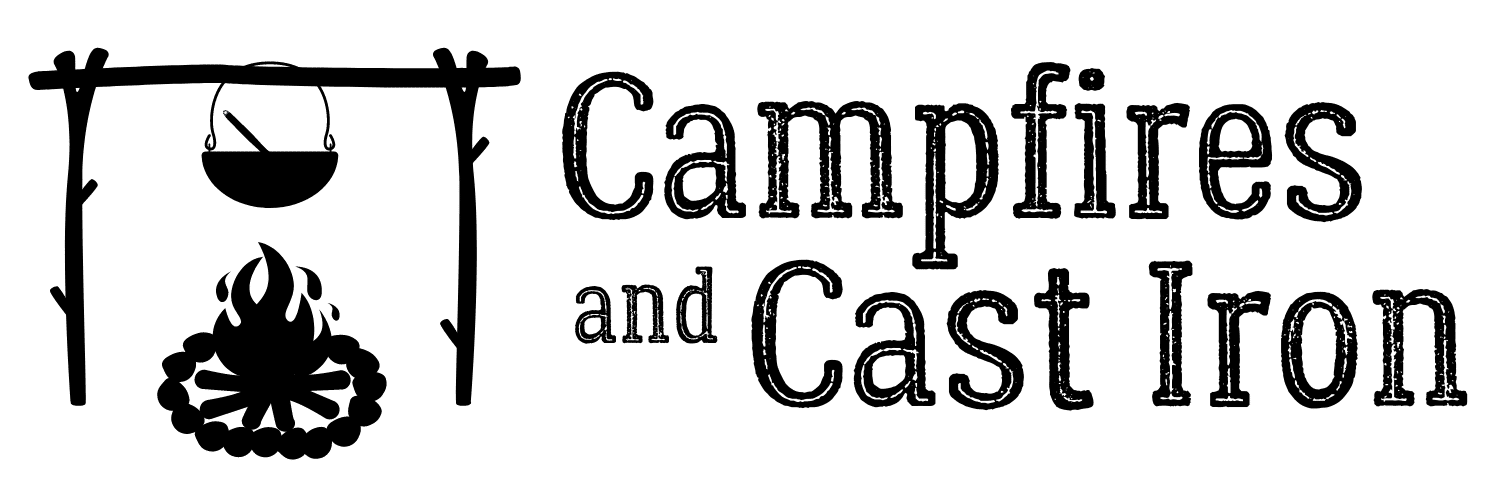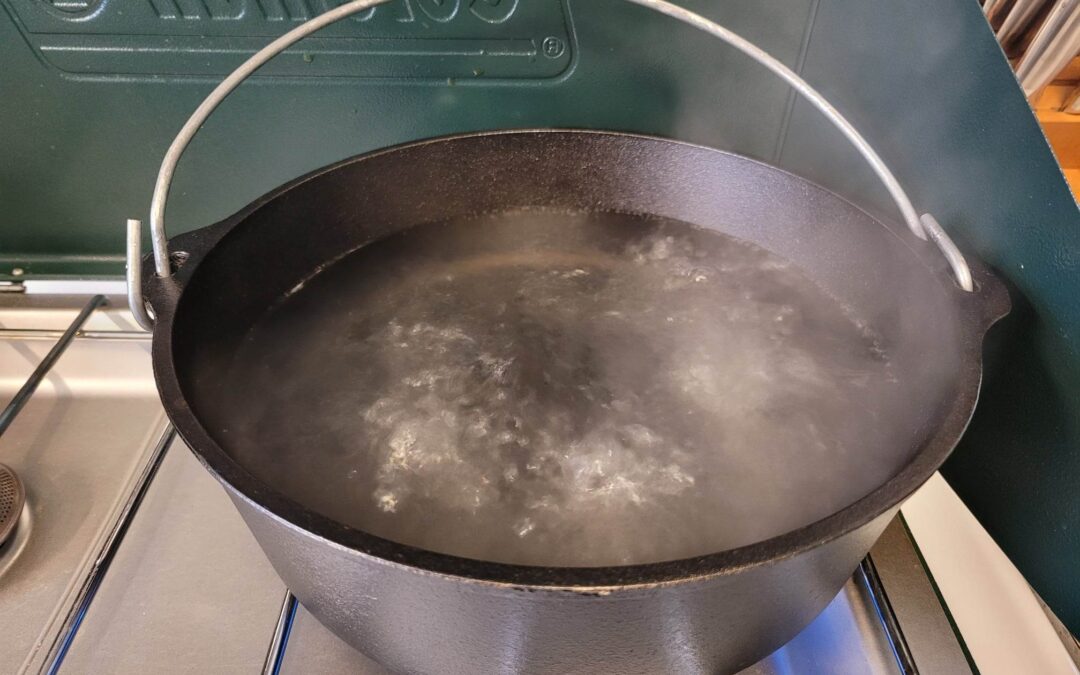This is another one of those topics that draws conflicting advice from the cast iron community: Can you boil water or simmer soups and stews in cast iron? Some people claim they use their cast iron pans or dutch ovens for simmering and boiling all the time without any issues, while others report a short bout of simmering left their seasoning patchy and flaky. So, what’s the verdict? Can you boil water in cast iron?
In general, it is fine to gently simmer stews and chili in a well-seasoned cast iron pot. However, avoid boiling or simmering water and broth-based dishes such as beans, pasta, and soups. The heat and turbulent motion of boiling water breaks down the seasoning layer, causing it to weaken and flake off.
In this article, we’ll talk about why it’s okay to simmer some foods in cast iron and not others, what types of cookware are best for boiling water and broth-based foods, and what to do if you’ve simmered or boiled foods in your cast iron and the seasoning has started flaking off.
The Difference Between Simmering and Boiling
Most people probably don’t give much thought to the difference between simmering and boiling. Both terms mean a liquid is hot enough to produce bubbles, right? True, but it’s not quite that simple.
According to this article by Cook’s Illustrated, simmering happens when a liquid is heated to between 180 and 190 degrees F and is characterized by “small bubbles that rise from the bottom of the pot occasionally.”
In contrast, boiling happens when a liquid reaches a temperature of at least 212 degrees F and is characterized by “large bubbles that vigorously rise from the bottom of the pot and continually break the surface.”
The videos below demonstrate the difference between simmering and boiling water.
Why You Shouldn’t Boil Water In Cast Iron
To understand why boiling water in cast iron cookware isn’t ideal, you first need to know a little bit about seasoning.
Cast Iron Seasoning In A Nutshell
When you season cast iron, you’re essentially baking very thin layers of cooking oil onto the surface of the pan. By heating the oiled pan to a high temperature in the oven, usually around 450 degrees F for an hour, the oil molecules undergo a reaction called polymerization. This reaction causes the oil to bond with the iron and transform from a liquid into a solid coating that we call “seasoning.”
This seasoning layer acts as a barrier between the iron and your food. Without proper seasoning, food would taste like metal and be more prone to sticking to the pan when cooking. It also protects cast iron from moisture, which causes rust.
For more on cast iron seasoning, see this article: Seasoning Cast Iron Cookware: A Step-By-Step Guide.
How Boiling Water Damages Cast Iron Seasoning
Okay, so if cast iron pots and pans have a protective seasoning layer, why shouldn’t you boil water in them? Here’s the best way to explain it: Have you ever cooked something and it stuck to the pan really badly? Even in a non-stick pan, it can be very difficult to remove burnt or stuck-on food. So what do people typically do? Either soak the pan in hot water or boil water in the dirty pan to loosen the food residue. The heat and agitation from the boiling water expand the molecules of the metal pan, rehydrate stuck-on food, and lift it away from the pan’s surface.
This is pretty much the same thing that happens when you boil water or broth-based foods in seasoned cast iron. The heat and turbulent motion produced by boiling liquids can end up causing the baked-on seasoning layer to weaken and even release from the iron in some places, leaving you with a patchy, unevenly-seasoned pan.
As an added bonus, the flaky seasoning bits tend to end up in your food. Sounds delicious, right? Not so much. But don’t worry. While unappetizing, it’s totally harmless. Seasoning flakes are simply made of carbonized oil and won’t cause any harm if accidentally ingested.
So if you plan to cook beans, pasta, or soups, it’s best to use a non-cast iron stockpot or saucepan. Stainless steel or enamel-coated pots are my favorites for boiling and simmering these types of foods, particularly for long periods of time.
A Visual Demonstration
To demonstrate the effects of boiling water on cast iron seasoning, I took a photo of this dutch oven, boiled water in it for 20 minutes, then drained the water and took another photo. Note the visible lighter marks around the sidewall and bottom of the dutch oven on the right. This is the result of weakened and partially removed seasoning.
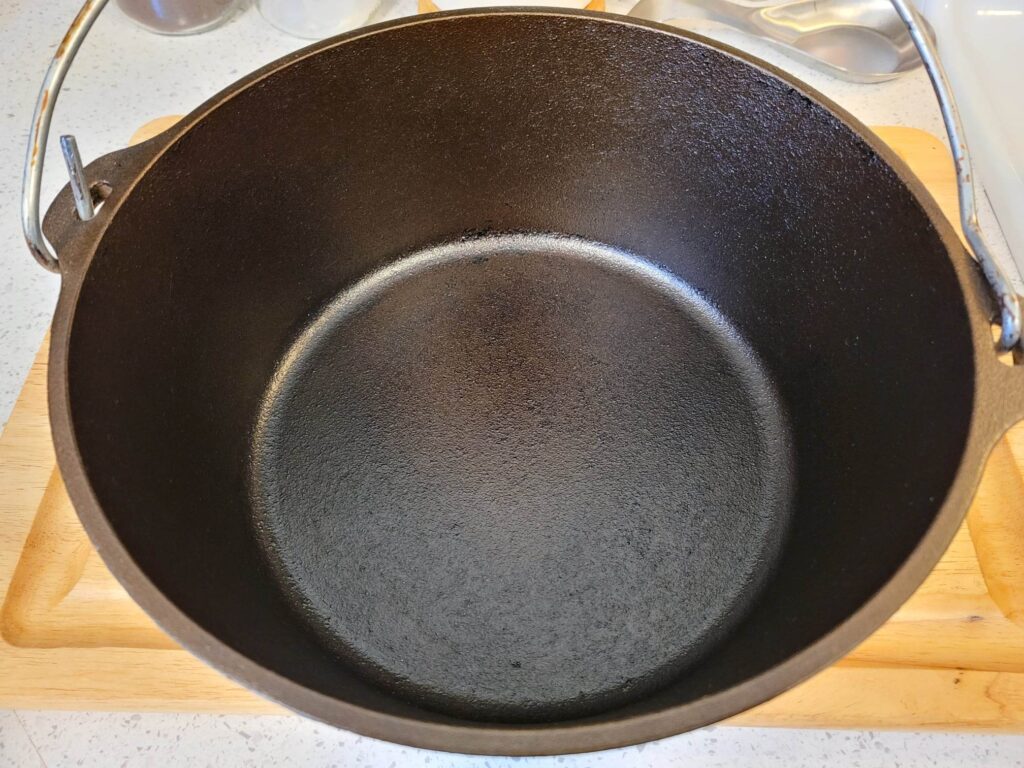
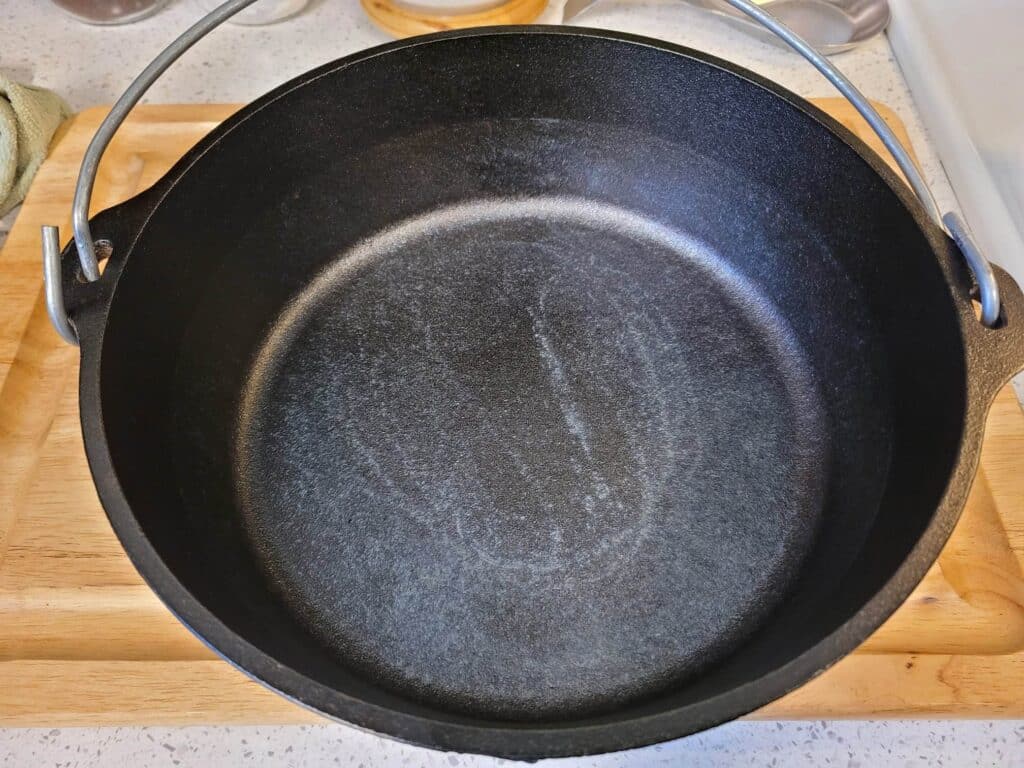
Can You Boil Water In Enameled Cast Iron?
Enamel-coated cast iron is different than traditional seasoned or “uncoated” cast iron. Enameled cast iron is made by fusing powdered glass, sometimes mixed with porcelain, onto the iron in an extremely hot kiln. The powdered glass melts and permanently binds to the cast iron, producing a strong, non-porous finish (source).
It is completely fine to boil and simmer pasta, beans, soups, stews, chili, and anything else you like in enameled cast iron cookware. The enamel coating will not weaken or flake off like traditional cast iron seasoning.
Can You Simmer Stew and Chili In Cast Iron?
Yes, it is fine to simmer stews and chili in cast iron pans and dutch ovens, with one caveat: Make sure your cast iron pot is well-seasoned.
I usually advise against simmering liquids or cooking anything tomato-based in brand-new cast iron because the seasoning layer hasn’t had time to strengthen. Every time you cook with oil or fat in cast iron, you help build up the seasoning layer. Generally, after a couple of months of regular cooking, your cast iron will be ready to take on sauces, stews, and chili without a problem.
Because simmering takes place at a lower temperature and there is less turbulent friction from bubbles when cooking thicker stews and chili, it is not as hard on the seasoning layer. Limiting simmering to around 30 minutes or less also helps protect the seasoning.
Can You Boil Water In A Cast Iron Kettle?
You may have seen a cast iron kettle, or maybe you have one sitting on your wood stove. I get asked frequently about cast iron tea kettles, and if they’re really safe for making tea.
While the uncoated, bare iron kettles are not for making tea, it’s completely fine to brew a cup in an enamel-coated kettle. The two varieties are pictured below.
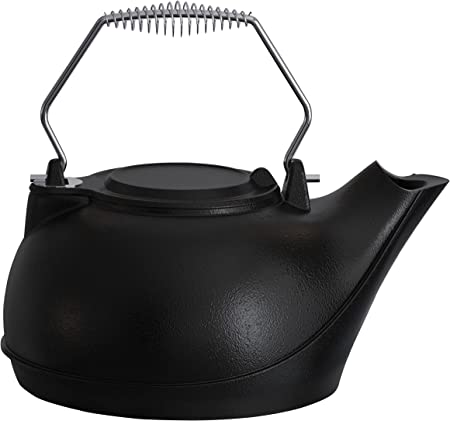
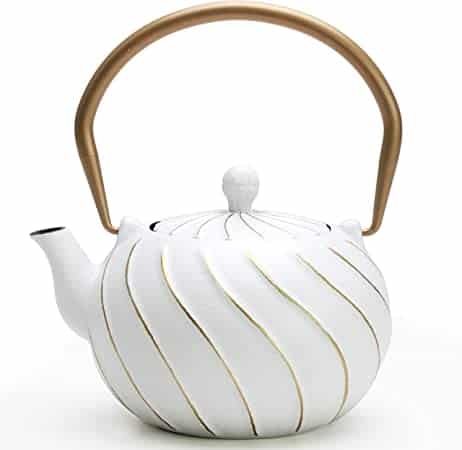
Nowadays, cast iron kettles are designed for use as wood stove humidifiers, or “stove steamers,” instead of boiling water for tea. While kettles are made to boil water, the non-enameled versions tend to rust quickly on the inside and should not be used to heat liquids for drinking.
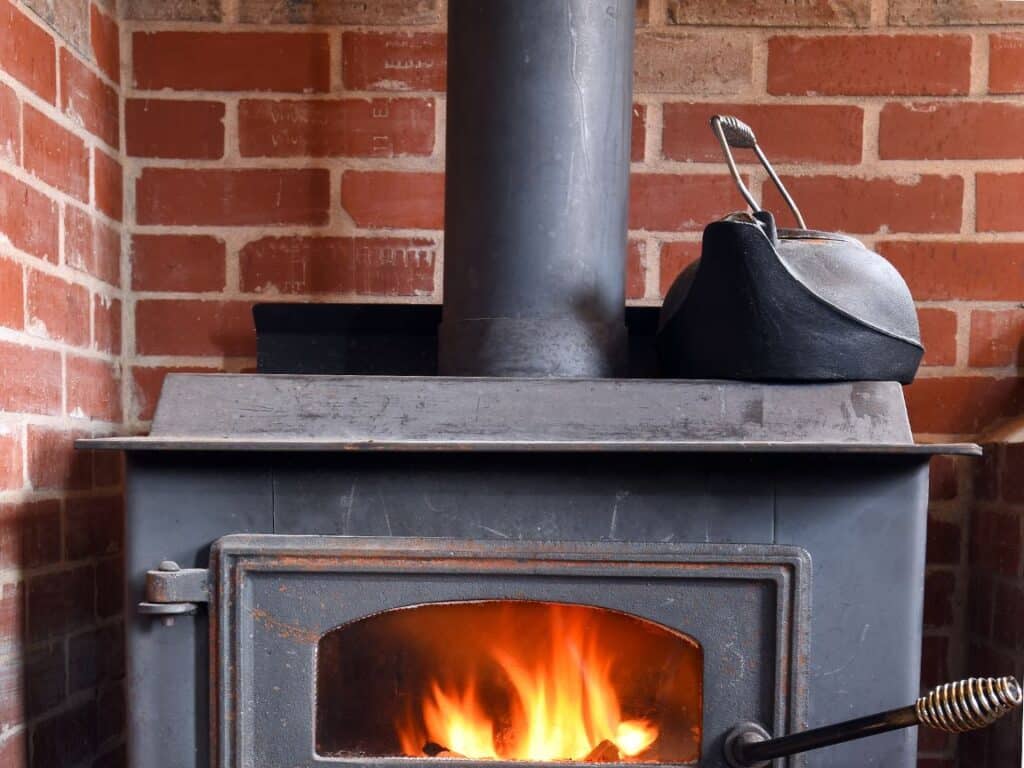
To keep your kettle humidifier in good shape, make sure to empty out any excess water between uses to reduce rust buildup inside the pot. It’s best to do this when the kettle is still warm, but safe to handle. Then, leave the lid off, and the residual heat will help evaporate the remaining moisture.
How To Fix Flaky Cast Iron Seasoning After Boiling Water
If your cast iron cookware’s seasoning layer is looking a bit flaky or patchy, don’t worry. It’s easy to fix:
1. Scour The Pan
Normally, you wouldn’t want to scour the surface of your cast iron. However, in this case, the goal is to remove the flaky seasoning layer, so scour away! I recommend using steel wool or Brillo pads, a rough-textured sponge, or even a handful of course salt and a rag. You probably won’t be able to remove all of the seasoning, but that’s ok. The goal is just to remove as much of the flaky, peeling portion as possible.
2. Wash And Dry The Pan
Use dish soap and water to wash the pan, removing any residual flaky residue. Rinse the pan in cold water to help prevent flash rust from forming on the bare metal. Dry the pan well with a towel.
3. Re-Season The Pan
Pre-heat the oven to 450 degrees F. Use a lint-free cloth to rub cooking oil over all surfaces of the cast iron pan. I recommend using grapeseed oil, canola oil, or BuzzyWaxx for seasoning. Once the oil has been applied, take another clean, lint-free cloth and buff all surfaces of the pan to remove excess oil. You want to wipe it off really well, as if you’re trying to remove all the oil you just applied. There will still be plenty of oil on the iron to produce a good seasoning layer without causing streaking and stickiness.
Place your oiled pan upside down on the middle oven rack and heat it for an hour. When the hour is up, turn off the oven but don’t take the cast iron out right away. Crack the oven door open a few inches and let the pan gradually cool off until it is safe to handle. Repeat the oiling and heating process an additional two to three times to build up a strong seasoning layer that resists flaking and peeling.
Summary
In summary, it’s best to avoid boiling water or broth-based foods in cast iron cookware to protect the seasoning layer. However, simmering stews, chili, and non-water or broth-based dishes is completely fine in a well-seasoned pot.
If you’re having trouble with flaky cast iron seasoning, simply scrub, re-season, and keep cooking!
This post may contain affiliate links. This means if you click on a link and make a purchase, I will receive a small commission, at no cost to you, that makes it possible for me to keep the Campfires and Cast Iron site up and running. Please see our disclosure policy for details.
